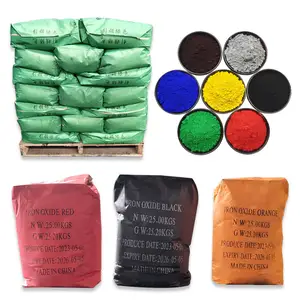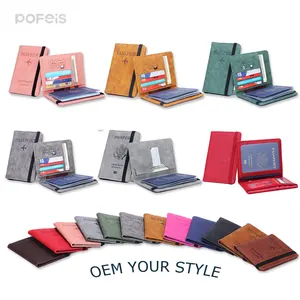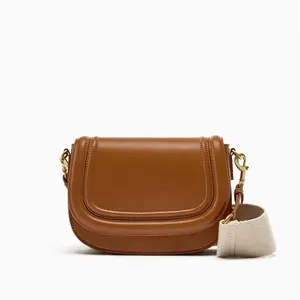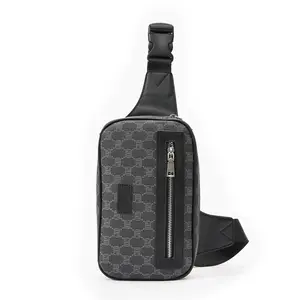Phổ biến trong ngành của bạn
- 5%






Nhà cung cấp mực UV RICOH/Konica đầu máy in phun phẳng UV in màu đen cứng UV mực cho Acrylic PVC Pet in
Sẵn sàng vận chuyển
13,77 US$ - 21,84 US$
Đơn hàng tối thiểu: 1 Lít
Vận chuyển mỗi chiếc: 35,00 US$



Hiệu quả nhất Hữu Cơ perylene S-1086 CAS: 83524-75-8 sắc tố đen 32 được sử dụng trong xe sơn xây dựng phòng
115,00 US$ - 130,00 US$
Đơn hàng tối thiểu: 1 Kilogram







Bán buôn Hữu Cơ perylene CAS không có 83524 PB 32 sắc tố đen 32 cho sơn và lớp phủ
0,50 US$ - 1,50 US$
Đơn hàng tối thiểu: 50 Gram







Matte Công Nghiệp Nhựa Colorant Pigment Indigo Bột Sắt Oxit Màu Sắc Tố Cho Sơn Nước Vôi Rửa Nghệ Thuật Sơn Tường
0,40 US$ - 1,00 US$
Đơn hàng tối thiểu: 10 Kilogram
Vận chuyển mỗi chiếc: 54,41 US$



Cường độ cao sắc tố đen 32 cho Sơn Công Nghiệp và lớp phủ CAS số: 83524-75-8
115,00 US$ - 128,00 US$
Đơn hàng tối thiểu: 1 Kilogram







Nhà máy cung cấp hóa chất oxit sắt màu đen cho pvc hs mã 2821100000 cho pvc
1,88 US$ - 1,95 US$
Đơn hàng tối thiểu: 5 Kilogram












Tổng hợp bột sắt oxit đỏ màu vàng màu xanh màu xanh lá cây màu cam đen sắc tố màu nâu cho acrylic sơn sơn tĩnh điện
630,00 US$ - 1.050,00 US$
Đơn hàng tối thiểu: 1 Tấn hệ mét






Jz masterbatch carbon đen masterbatch tập trung đùn thổi phim nhựa đen sắc tố cho đường ống và bao bì túi
1,00 US$ - 1,15 US$
Đơn hàng tối thiểu: 1 Kilogram






Dimablack sắc tố đen 7 carbon đen 214 cho màu sắc chuẩn bị nhựa PVC
5,00 US$
Đơn hàng tối thiểu: 100 Kilogram






Nhà Máy chi phí thấp Carbon bột màu đen sắc tố đen 7 cho nhựa PVC
1,20 US$ - 2,80 US$
Đơn hàng tối thiểu: 100 Kilogram






Carbon đen sắc tố cho lốp xe, vật liệu xây dựng, nhựa Màu chủ, PVC vv.
700,00 US$ - 750,00 US$
Đơn hàng tối thiểu: 1000 Kilogram
Vận chuyển mỗi chiếc: 9,57 US$
Các tìm kiếm liên quan:


Bột Màu Tô Màu PBk7 Siêu Đậm Đặc Màu Đen Polymer O Cho PVC, Epoxy Và Polyurethane (Palizh PO.BKS.671.2)
6,38 US$ - 9,11 US$
Đơn hàng tối thiểu: 1 Kilogram






Sắt Oxit Đỏ/Vàng/Đen Pigment Đối Với Masterbatch/Nhựa
1.150,00 US$ - 1.300,00 US$
Đơn hàng tối thiểu: 5 Tấn hệ mét






The Manufacturer Of Iron Oxide Red 130 Inorganic Pigment
500,00 US$ - 800,00 US$
Đơn hàng tối thiểu: 5 Tấn












Chất Lượng Cao Vô Cơ Màu Vàng Sắc Tố Powder313 Chanh Màu Vàng Sáng Màu Sắc Tố Sắt Oxit Sắc Tố Màu Vàng Giá Cho Sơn
1,00 US$ - 1,50 US$
Đơn hàng tối thiểu: 1000 Tấn
Vận chuyển mỗi chiếc: 40,76 US$

Sắc tố mỹ phẩm màu xanh lá cây màu đỏ vàng màu xanh đen màu hồng
3,00 US$ - 3,50 US$
Đơn hàng tối thiểu: 200 Kilogram






Bột Màu Ma Thuật Nhiều Lớp Crôm Lấp Lánh Móng Tay Tắc Kè Hoa Chuyển Màu
48,00 US$ - 50,00 US$
Đơn hàng tối thiểu: 1 Kilogram
Vận chuyển mỗi chiếc: 29,43 US$










Nhà Máy Bán buôn vô cơ sắc tố sắt Oxit màu vàng sắc tố cho màu gạch sơn sàn
500,00 US$ - 1.000,00 US$
Đơn hàng tối thiểu: 1 Tấn


Chịu nhiệt độ Carbon bột màu đen sắc tố đen 7 nhựa PVC sơn
2,00 US$ - 3,00 US$
Đơn hàng tối thiểu: 500 Kilogram






Giá tốt nhất màu sắc tố Oxit sắt bột bê tông Ultramarine màu xanh cho lớp phủ PVC
0,95 US$ - 1,02 US$
Đơn hàng tối thiểu: 1000 Kilogram
Vận chuyển mỗi chiếc: 6,43 US$








Chất Lượng Tốt Vật Liệu Chống Tĩnh Màu Dán Sắc Tố Màu Đen Dán Sắc Tố Màu Đen Nhũ Tương Với Tùy Chỉnh Dịch Vụ Có Sẵn
4,90 US$ - 6,20 US$
Đơn hàng tối thiểu: 500 Kilogram






Bán Buôn Bột Màu Tím Fluo Gốc Nước Cho Nhựa PVC, Sơn, Lớp Phủ, In Dệt
5,80 US$ - 6,80 US$
Đơn hàng tối thiểu: 100 Kilogram






Cung Cấp Nhà Máy Bột Đánh Dấu Laser Màu Trắng Chạm Khắc Màu Đen Bột Khắc Radium Sơn Radium Màu Nhựa
23,00 US$ - 28,00 US$
Đơn hàng tối thiểu: 1 Kilogram






Hạt Làm Sáng Quang Học Màu Trắng Đen Trắng Chất Phụ Gia Tio2 Nhựa PE HDPE Nhựa PET Tùy Chỉnh
2,00 US$ - 5,00 US$
Đơn hàng tối thiểu: 1 Kilogram
Vận chuyển mỗi chiếc: 27,70 US$






Nhà máy cung cấp toàn bộ sơn sắc tố sắt Oxit Đỏ/Nâu/Đen/vàng với giá cả cạnh tranh
0,40 US$ - 1,20 US$
Đơn hàng tối thiểu: 1 Kilogram
Vận chuyển mỗi chiếc: 70,00 US$






Chất lượng cao sơn sắc tố sắt Oxit Đỏ/Nâu/Đen/vàng với giá cả cạnh tranh
1,98 US$ - 2,87 US$
Đơn hàng tối thiểu: 1 Kilogram




Chất Lượng Hàng Đầu Hữu Cơ Sắc Tố Bột Nhựa Sắc Tố Cam 36 Cho Da In Ấn Mực Viết Mực
19,00 US$ - 21,00 US$
Đơn hàng tối thiểu: 1 Kilogram
Vận chuyển mỗi chiếc: 95,10 US$






Màu nhựa PP PE PVC thổi phim thân thiện với môi trường dòng chảy ép chống oxy hóa lớn màu đỏ masterbatch
1,70 US$ - 2,20 US$
Đơn hàng tối thiểu: 1 Tấn






Nhà máy cung cấp đầy màu sắc Oxit sắt màu vàng 313 và đỏ 130 Oxit sắt cho mỹ phẩm bê tông PVC Oxit sắt
0,78 US$ - 1,00 US$
Đơn hàng tối thiểu: 5000 Kilogram
Vận chuyển mỗi chiếc: 88,03 US$






Đỏ Cam Xanh Nâu Đen Xanh Vàng Oxit Sắt Sắc Tố Cho Nhựa PVC
0,56 US$ - 0,98 US$
Đơn hàng tối thiểu: 1 Kilogram






Sắt Oxit đỏ sắc tố cho xây dựng, cao su, in ấn, PVC, pavings Gạch vv.
700,00 US$ - 750,00 US$
Đơn hàng tối thiểu: 1000 Kilogram
Vận chuyển mỗi chiếc: 9,57 US$






Bán buôn của carbon đen sắc tố cho màu sắc masterbatch nhựa mực lớp phủ trong các nhà máy
0,80 US$ - 2,60 US$
Đơn hàng tối thiểu: 25 Kilogram
Vận chuyển mỗi chiếc: 25,28 US$





Bột Màu Đen PBk7 Bột Màu Polymer O Cho PVC, Epoxy Và Polyurethane (Palizh PO.B.605.2)
4,36 US$ - 6,23 US$
Đơn hàng tối thiểu: 1 Kilogram






Màu Vô Cơ Carbon Màu Đen Cho Lớp Phủ Nhựa Masterbatch
0,45 US$ - 3,00 US$
Đơn hàng tối thiểu: 1 Kilogram
Vận chuyển mỗi chiếc: 519,69 US$






Thay Đổi Màu Sắc Flake Được Sử Dụng Để Trang Trí In Đồ Đạc Nail Beauty Ceramic Pigment 2105P
44,00 US$ - 47,00 US$
Đơn hàng tối thiểu: 1 Kilogram






Pigments China Manufacturers Iron Oxide Color Pigment For Coating
500,00 US$ - 800,00 US$
Đơn hàng tối thiểu: 5 Tấn
Các danh mục hàng đầu
Giới thiệu về sắc tố đen cho pvc
Dù cho một bữa tiệc cầu kỳ, cho văn phòng hay cho một chuyến đi chơi bình thường, hãy tìm sự hoàn hảo. sắc tố đen cho pvc trên Alibaba.com .. sắc tố đen cho pvc đã trở nên không chỉ là một vật dụng có chức năng để đựng các vật dụng hàng ngày. Bây giờ chúng được coi là một phụ kiện thiết yếu và thường được phối hợp với phần còn lại của trang phục của một người để có một cái nhìn thời trang. Những cái này. sắc tố đen cho pvc thường chứa nhiều phần tô điểm và phần tử thiết kế để nâng cao thương số phong cách của một người.
Các. sắc tố đen cho pvc được cung cấp trên Alibaba.com được làm từ da hoặc vải có chất lượng tốt nhất, để đảm bảo giao diện và cảm nhận cao cấp. Những cái này. sắc tố đen cho pvc có túi, bao, khóa kéo và tay cầm được thiết kế tốt để cung cấp cho người dùng sự tiện lợi tối đa .. sắc tố đen cho pvc có cả kiểu dáng truyền thống và cổ điển cũng như những mẩu tuyên bố kỳ quặc có khả năng thu hút sự chú ý. Những người đam mê thời trang có thể sẽ rất vui mừng bởi hàng loạt các sản phẩm được cung cấp.
sắc tố đen cho pvc có nhiều kích thước và hình dạng khác nhau. Chúng bao gồm từ những món cực kỳ nhỏ dành cho mục đích trang trí đến những món lớn hơn có nhiều vách ngăn và túi cho những người cần mang nhiều đồ .. sắc tố đen cho pvc có sẵn ở dạng rắn cũng như được đính đá quý, đá, và thậm chí cả kim loại quý .. sắc tố đen cho pvc có thể cứng và không linh hoạt hoặc được làm từ vật liệu mềm và co giãn, tùy thuộc vào nhu cầu của người dùng. Chúng có thể trong suốt hoặc có màu đồng nhất và có thể được làm thủ công cẩn thận bằng gương và các vật trang trí khác.
Tăng kho ngoại hình của bạn với phạm vi đáng yêu và hấp dẫn này. sắc tố đen cho pvc có sẵn trên Alibaba.com. Với các ưu đãi và chiết khấu vô cùng hấp dẫn, hãy mua bao nhiêu tùy thích mà không lo vượt quá ngân sách của bạn .. sắc tố đen cho pvc nhà cung cấp và người bán buôn cũng có thể lấy những mặt hàng đáp ứng tốt nhất sở thích của họ với mức ưu đãi tuyệt vời.
Các. sắc tố đen cho pvc được cung cấp trên Alibaba.com được làm từ da hoặc vải có chất lượng tốt nhất, để đảm bảo giao diện và cảm nhận cao cấp. Những cái này. sắc tố đen cho pvc có túi, bao, khóa kéo và tay cầm được thiết kế tốt để cung cấp cho người dùng sự tiện lợi tối đa .. sắc tố đen cho pvc có cả kiểu dáng truyền thống và cổ điển cũng như những mẩu tuyên bố kỳ quặc có khả năng thu hút sự chú ý. Những người đam mê thời trang có thể sẽ rất vui mừng bởi hàng loạt các sản phẩm được cung cấp.
Tăng kho ngoại hình của bạn với phạm vi đáng yêu và hấp dẫn này. sắc tố đen cho pvc có sẵn trên Alibaba.com. Với các ưu đãi và chiết khấu vô cùng hấp dẫn, hãy mua bao nhiêu tùy thích mà không lo vượt quá ngân sách của bạn .. sắc tố đen cho pvc nhà cung cấp và người bán buôn cũng có thể lấy những mặt hàng đáp ứng tốt nhất sở thích của họ với mức ưu đãi tuyệt vời.






















